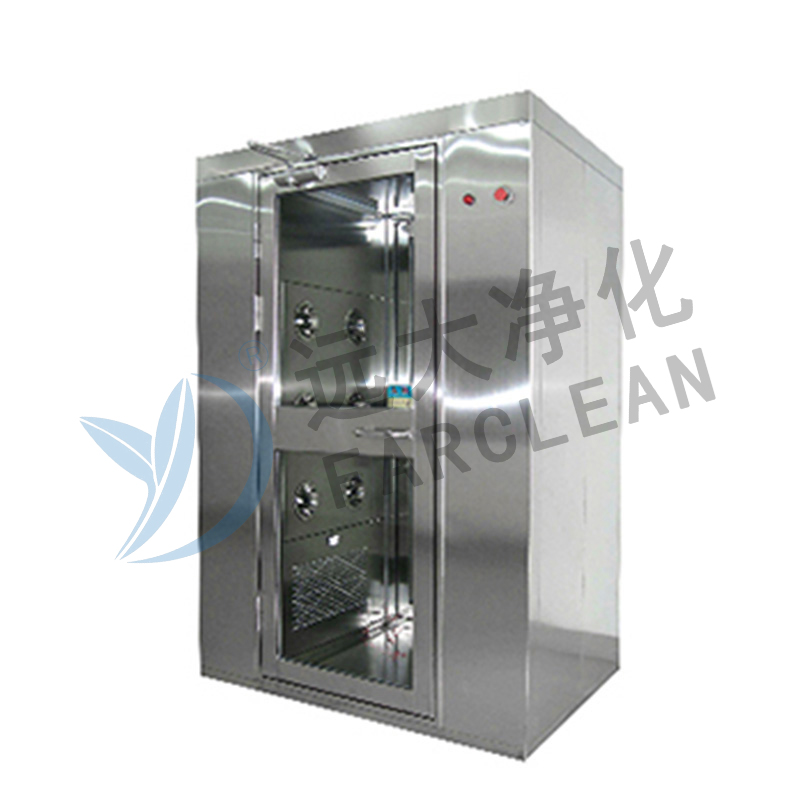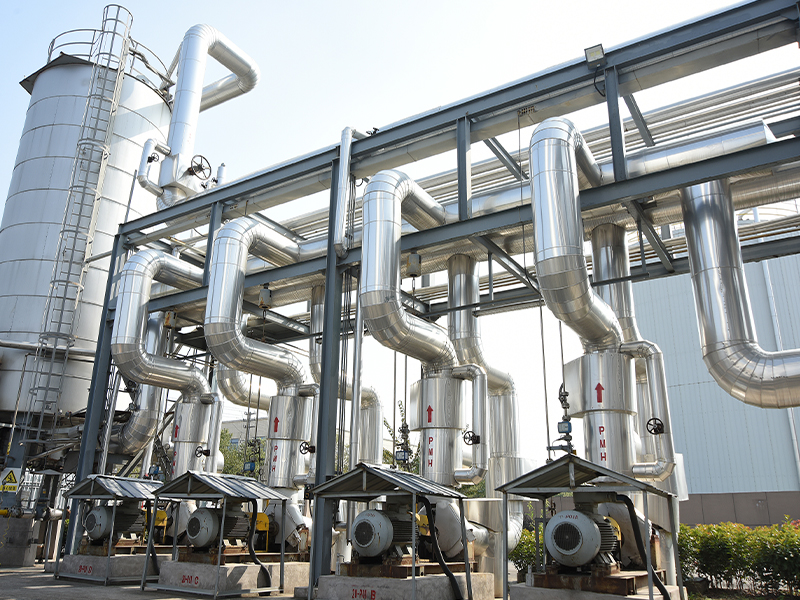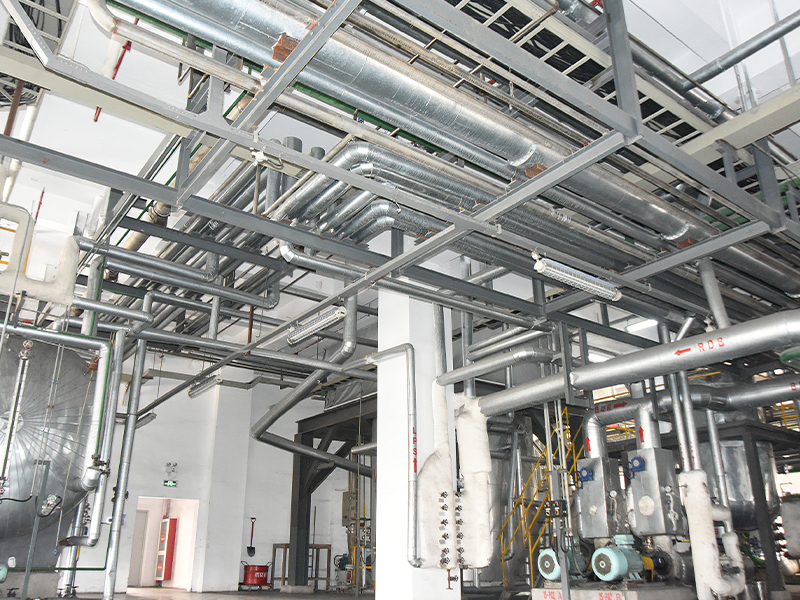In the meticulously controlled environments of cleanrooms – where a single particle or microorganism can compromise sensitive processes – the Air Shower stands as an indispensable defensive barrier. More than just a room, it's a highly engineered decontamination airlock designed to remove surface contaminants from personnel and materials before they enter the sterile core. Acting as the vigilant guardian at the threshold, air showers are fundamental to maintaining the stringent purity levels required in industries ranging from semiconductor manufacturing to pharmaceutical production and biotechnology research.
The Core Mission: Preventing Contamination Transfer
Cleanrooms maintain specific ISO classifications (e.g., ISO Class 5, Class 7) by rigorously controlling airborne particles. Personnel, despite wearing specialized cleanroom garments (bunny suits, hoods, booties), remain significant potential sources of contamination. They shed skin cells, hair, fibers, and microorganisms. Materials and equipment entering the cleanroom carry surface particles. The air shower's critical function is to intercept and remove these contaminants at the entry point.

How It Works: A Blizzard of Filtered Air
An air shower operates on a simple yet highly effective principle: high-velocity, HEPA or ULPA filtered air jets. Here's the typical process:
-
Entry: Personnel or materials enter the air shower through one door. Both doors are interlocked – only one door can be open at a time to prevent unfiltered air from bypassing the shower and entering the cleanroom.
-
Activation: Sensors detect presence, triggering the shower cycle. Audible or visual signals indicate activation.
-
High-Velocity Air Blast: Powerful, strategically positioned nozzles in the walls and ceiling (and sometimes floor) emit jets of ultra-clean, HEPA/ULPA filtered air at high velocities (typically 20-25 m/s / 4000-5000 ft/min).
-
Surface Scrubbing: The turbulent, high-velocity air physically dislodges loose particles (dust, fibers, skin flakes) and microorganisms adhering to the surface of garments, gloves, goggles, and materials.
-
Contaminant Removal: The dislodged contaminants are immediately captured by the intake grilles, usually located near the floor, and pulled into the air shower's filtration system.
-
Filtration & Recirculation: Contaminated air passes through pre-filters (to capture larger debris) and then the main HEPA (High-Efficiency Particulate Air) or ULPA (Ultra-Low Penetration Air) filters. HEPA filters remove 99.97% of particles ≥0.3 microns, while ULPA filters remove 99.999% of particles ≥0.12 microns. The cleaned air is then recirculated back to the nozzles.
-
Cycle Completion & Exit: After a preset cycle time (usually 15-30 seconds for personnel, longer for carts/materials), the air jets stop. An indicator signals it's safe to open the inner door to the cleanroom.
Key Components of an Effective Air Shower:
-
Enclosure: Constructed from smooth, non-shedding materials (typically stainless steel 304 or 316, or powder-coated steel). Seamless construction minimizes particle traps.
-
High-Efficiency Blower(s): Provide the necessary high-volume, high-velocity airflow. Often variable speed for optimization.
-
HEPA/ULPA Filtration System: The heart of the unit. Multi-stage filtration (pre-filter + HEPA/ULPA) ensures air purity. Filter integrity is paramount.
-
Air Nozzles: Strategically positioned for optimal coverage and turbulence across the entire surface of personnel/materials. Adjustable nozzles enhance effectiveness.
-
Intake Grilles: Located to efficiently capture contaminated air, typically low on walls or on the floor.
-
Control System: Programmable Logic Controller (PLC) or microprocessor managing:
-
Cycle timing and sequence
-
Blower speed/airflow control
-
Interlock logic (door safety)
-
Alarm systems (filter clog, door fault, low airflow)
-
User interface (display, start button)
-
-
Interlocked Doors: Critical safety and containment feature. Electromechanical or magnetic interlocks prevent both doors opening simultaneously. Automatic sliding doors are common.
-
Lighting: Sealed, cleanroom-compatible fixtures.
-
Optional Features:
-
Floor grilles for bottom-up airflow (enhanced material cleaning).
-
Ionizing bars to neutralize static charge (reduces particle adhesion).
-
Voice prompts or multilingual displays.
-
Material pass-throughs (smaller airlocks for tools/parts).
-
Data logging for compliance records.
-
Why Air Showers are Essential: Benefits
-
Significant Particle Reduction: Can remove 80-95%+ of surface particles from personnel and materials.
-
Protects Cleanroom Integrity: Prevents external contaminants from breaching the controlled environment, maintaining ISO classification.
-
Reduces Product Contamination Risk: Crucial for yield in semiconductors and sterility in pharma/biotech.
-
Extends HEPA Filter Life: By capturing bulk contamination before it enters the main cleanroom, the primary HEPA filters last longer and work more efficiently.
-
Enforces Gowning Discipline: Acts as a physical reminder and procedure point for proper contamination control practices.
-
Cost-Effective Contamination Control: Far more efficient than relying solely on the cleanroom's own air handling system to dilute and remove contaminants brought in by personnel.
Critical Applications: Where Purity is Paramount
-
Semiconductor & Microelectronics Fabrication: Protecting wafers and chips from killer particles during photolithography, etching, and assembly (ISO Class 1-5).
-
Pharmaceutical Manufacturing: Ensuring sterility in aseptic filling lines, vaccine production, and sterile API handling (ISO Class 5/Grade A).
-
Biotechnology & Life Sciences: Preventing contamination in cell culture labs, tissue engineering, and genetic research.
-
Medical Device Manufacturing: Critical for sterile device assembly and packaging.
-
Aerospace: Precision optics, laser systems, and satellite assembly where particles can impair performance.
-
Nanotechnology Research & Production: Where even nanoscale particles can disrupt processes.
-
Hospital Isolation Rooms & Labs: Entry points for high-level containment (BSL-3/4) or protective environments (e.g., for immunocompromised patients).
Design Considerations & Selection Factors
Choosing the right air shower requires careful analysis:
-
Cleanroom Classification: Dictates the required filtration efficiency (HEPA vs. ULPA) and potentially air velocity.
-
Throughput: Number of personnel/materials entering per hour. Determines size (single-person, multi-person, walk-in, pass-through) and cycle time needs.
-
Personnel vs. Material Focus: Personnel showers focus on body coverage. Material/cart showers need floor nozzles and larger dimensions.
-
Airflow Pattern & Velocity: Nozzle placement and velocity must ensure full coverage and effective scrubbing. Minimum velocity typically 20 m/s (4000 ft/min).
-
Filtration: HEPA (ISO Class 5-8) or ULPA (ISO Class 1-5)? Filter size and accessibility for testing/changing.
-
Construction Material: Stainless steel (304, 316) is preferred for durability and cleanability. Powder-coated steel may be suitable for less stringent areas.
-
Control System & Features: Required level of automation, alarms, data logging, user interface.
-
Interlocks: Reliability and type (mechanical, magnetic).
-
Size & Layout: Must fit the gowning room/airlock space and accommodate movement.
-
Compliance: Meeting relevant standards (IEST, ISO 14644, GMP).
Maintenance: Ensuring Ongoing Performance
An air shower is only as good as its maintenance:
-
Regular Filter Replacement: Pre-filters (frequently) and HEPA/ULPA filters (as per pressure drop monitoring or scheduled replacement). Filter failure renders the shower ineffective.
-
Filter Integrity Testing: Periodic DOP (Dispersed Oil Particulate) or PAO (PolyAlphaOlefin) testing to verify HEPA/ULPA seals and efficiency.
-
Airflow Velocity Verification: Ensuring nozzles meet specified velocity.
-
Cleaning: Frequent interior cleaning of walls, floors, grilles, and nozzles with cleanroom-compatible agents. The shower itself must not become a source of contamination.
-
Door Interlock Checks: Regular testing to ensure safety and containment.
-
Blower & Motor Maintenance: Per manufacturer's schedule.
Future Trends: Smarter, More Efficient Gatekeepers
-
Advanced Sensor Integration: Real-time particle counters inside the shower providing immediate feedback on decontamination effectiveness and triggering alarms if performance drops.
-
Touchless Operation & IoT: Motion sensors, voice activation, remote monitoring of performance parameters (airflow, filter status), predictive maintenance alerts.
-
Energy Efficiency: Optimized blower control (VFDs), improved aerodynamics, and low-leakage designs reducing operational costs.
-
Enhanced Materials: Antimicrobial coatings on interior surfaces, even more durable and cleanable materials.
-
Integration with Access Control: Linking shower cycle completion to cleanroom door access for enforced compliance.
-
Advanced Airflow Modeling: Computational Fluid Dynamics (CFD) used to optimize nozzle placement and airflow patterns for maximum particle removal.
The Non-Negotiable Airlock
The cleanroom air shower is not a luxury; it's a fundamental engineering control essential for achieving and maintaining critical levels of cleanliness. By aggressively removing surface contaminants at the point of entry, it acts as the vital first line of defense, protecting billions of dollars worth of product, sensitive research, and human health. Its effectiveness hinges on proper design matched to the cleanroom class, meticulous installation, and unwavering commitment to maintenance and filter integrity. As cleanroom technologies advance and contamination control standards become ever stricter, the air shower will continue to evolve as a smarter, more efficient, and indispensable gateway to the pristine environments that drive modern technological and scientific progress. Investing in a well-designed and rigorously maintained air shower is an investment in the integrity and success of the cleanroom itself.

 English
English русский
русский Español
Español





